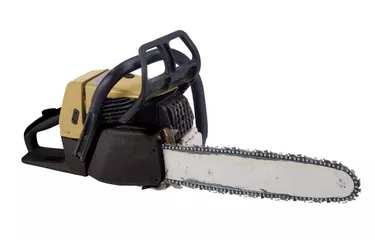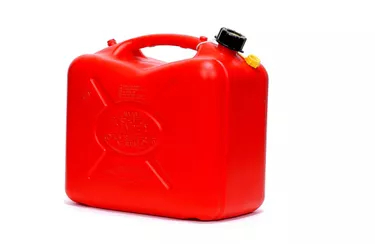
Although the carburetor on your Model 310 McCulloch Chainsaw was preset by the manufacturer before purchase, general use creates enough operational changes to necessitate occasional adjustment. Understanding how to tune your carburetor properly not only will improve performance, but will aid in avoiding engine seizure.
Before You Start
Video of the Day
Step 1
Make sure the carburetor adjustment holes are free from debris and the end of the adjustment screws are visible. Clear away any wood chips blocking access.
Video of the Day
Step 2
Inspect the saw's air filter and clean it if necessary. If you adjust your saw with a dirty air filter, the saw will run too lean when the filter finally is cleaned. A lean carburetor adjustment means the saw will have insufficient power, may cause cylinder temperature to rise and can lead to a seizure.
Step 3

Check to make sure the fuel tank is at least half full. If the carburetor is adjusted with inadequate fuel, the carburetor may be too rich when fuel is added later. With a too rich adjustment fuel does not burn well, power stroke is weak and carbon builds up.
Step 4
Identify the three carburetor adjusting screws, which control the proportion of fuel in the air-fuel mixture at different speeds: 1) idle/throttle stop 2) low and 3) high.
Carburetor Adjustment
Step 1
Start the engine to warm it up and set the idle speed. Adjustments made while the engine is cold will be too rich once the saw warms up to normal temperature. Place your tachometer near the spark plug so it picks up electrical signals when the plug fires; set the speed at about 2700 rpm. If you don't have a tachometer, try to set the speed so the saw will idle with the chain stopped.
Step 2
Set the low speed fuel adjustment. Turn the screw IN slowly until the engine surges, indicating it's running "lean." Remember this screwdriver position. Slowly turn the screw OUT until you hear the engine running more smoothly. Continue turning the screw until the engine starts to load up, incidating it's running "rich." Make a note of the position of the screwdriver slot. Finally, turn IN the screw to a position in between your lean and rich positions; this is where it should idle best.
Step 3
Set the high speed fuel adjustment. Hold the trigger wide open and check the rpm with the tachometer. If you do not have a tachometer, set the rpm level so that the saw "four cycles" or makes a "burbling' or "blub blub" sound at wide open throttle. This is a slightly rough sound; it shouldn't sound completely smooth. Do not attempt to set at maximum rpm levels without a tachometer. Setting the adjustment slightly rich will diminish performance, but it also reduces the possibility of damaging the saw engine.
Step 4
Return to Section 2, steps 1 and 2, to fine tune the idle and low speed fuel adjustments. Moving one adjusting screw often causes the other two to need readjustment. After you have readjusted idle and low speeds, high should be fine and your chainsaw is ready to use.
Tip
If your carburetor has no slots for a screwdriver, it is adjustable only with a special screwdriver available from the original equipment manufacturer.
Things You'll Need
Small bladed screwdriver
Tachometer